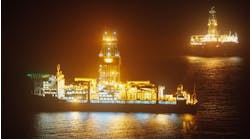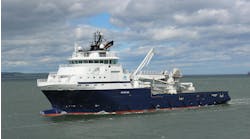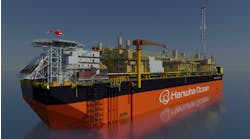Offshore staff
LONDON — Westwood Global Energy Group expects day rates for offshore drilling rigs to sustain this year’s increases into 2026.
However, Westwood subsidiary RigLogix cautioned that drilling contractors have responsibilities to achieve their own climate targets, through the adoption of emissions-reductions technologies.
The analyst’s "Offshore Rigs and the Energy Transition" market report found that most of the currently upgraded fleets have sound backlogs and are commanding day rate premiums compared with their standard counterparts.
But there are only two “eco” designed semisubs under construction and two drillships in shipyards with green credentials: one has work lined up, while the other is being marketed.
Most of the low-emission retrofitted rigs are at work in the North Sea, with the strongest take-up in Norway due in part to high carbon taxes. Other rigs in this category are contracted in the US Gulf of Mexico and offshore South America, with others in line for work off Africa, the Mediterranean and Australasia.
To meet their targets and cut carbon footprints, some drilling contractors are upgrading rigs with energy efficiency and emission tracking systems and fuel, energy and emissions analytics software.
Others are trialing alternative fuels or adopting fuel additives, securing “eco” notations for rigs from DNV GL and ABS and integrating energy management systems, such as DNV’s ISO 50001, into their fleets.
Another focus is on cutting emissions through measures to reduce the amount of time taken to drill a well. And most drilling contractors are training their crews for engine management performance, with incentives for emissions awareness and cuts, said Riglogix research director Teresa Wilkie.
Some operators are using upgraded low-emission rigs or working with the contractors on emission reductions during drilling campaigns to limit their Scope 1 emissions.
Equinor’s targets to reduce Scope 1 greenhouse-gas emissions from drilling rigs and floatels and Scope 3 emissions from contracted vessels by 50% by 2030 (2005 baseline) offshore Norway and 50% by 2050 (2008 baseline) globally.
Shell, Chevron, Aker BP and Petrobras are said to be the other top five users of these rigs.
Certain operators are offering emission-lowering bonus incentives on rig contracts, with rig tender documents increasingly requesting emissions information.
11.16.2022





